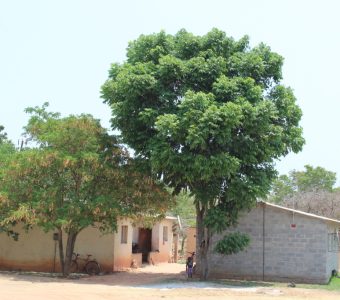
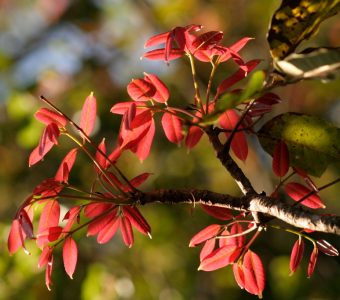
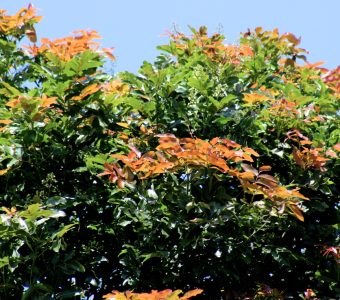
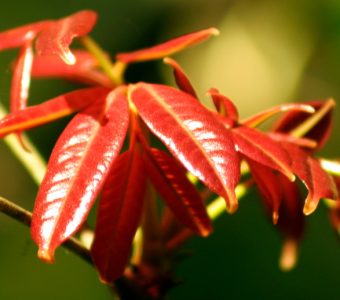
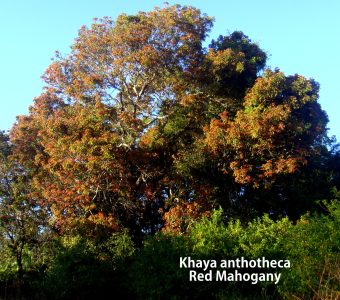
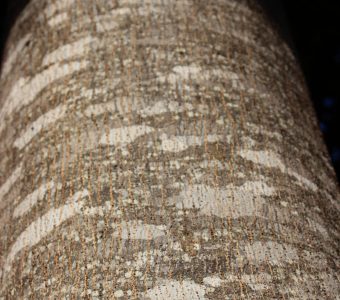

Botanical Name: Khaya anthotheca (Welw.) C. DC
Synonym: Khaya nyasica Stapf ex Baker f.
Common Name: East African Mahogany, Red Mahogany
Plant Family: Meliaceae
Origin: Africa
References: Coates Palgrave p.444, Storrs 1 p.161-162, van Wyk 2 p.184, Venter p.82. S.A. No. -. Zimb. No. 422
Description: An evergreen large or very large tree, sometimes exceeding over 60 metres in the wild, with an elongated or rounded much-branched crown and a long straight stem. Bark is grey and smooth, flaking on older branches. Leaves are dark and glossy, smooth and new leaves are bright red. Flowers white and sweetly scented, branched sprays at tips of branches. Fruit a splitting oval, hard and woody capsule with 4 to 5 valves that looks like dry open rosette.
Features of Particular Interest: Spectacular shape and majestic size, bright red new leaves, seed pods.
Height and Spread: Up to 30 m in garden
Periods of Interest:
Leaf: All year round.
Flowering: September to December.
Fruiting: March to September.
Cultivation
Soil and Moisture: K. anthotheca/nyasica occurs naturally near water in evergreen and riverine forest.
Aspect: A riverine forest tree, but grows well in full sun.
Hardiness: Protect from cold for first few seasons, able to withstand some drought but not frost.
Maintenance and Pruning: Fast growing up to 1.5m per year.
Propagation: Grows easily from seed sown in spring. Should be transplanted at the two leafed stage, and transplant the young trees when reach 300mm.
Problems and Drawbacks: Grows straight up at first, can look strange until the crown develops.
Use and Associated Plants: K. anthotheca/nyasica is a spectacular shade tree, and has been used extensively in coffee plantations to provide shade. Avery useful timber wood, with dark reddish wood used for bench tops, paneling and cabinets, also for building. May also be considered as a plantation tree, in warm high rainfall areas. It is a neat and decorative tree for the larger garden and parks, and root system is not aggressive.
